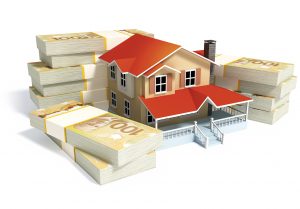What are the alternatives to a reverse mortgage?
Take out a new first mortgage or add to an existing one.
This would be the least expensive way for homeowners to gain access to some extra cash. The big snag for many retirees is that they may no longer have sufficient income to qualify for a mortgage, especially if they already have debts to carry. Those with an acceptable income who are relatively debt-free could save a lot of interest over the long term with a regular as opposed to a reverse mortgage.
If you’re worried about making those added monthly payments, you can always set aside part of the loan for that purpose and instruct your bank to make automatic withdrawals, and you’d still have ample cash for your other needs. And unlike as with a reverse mortgage, the total you owe would not continue rising. That’s particularly important if you hope to leave an inheritance.
One of the disadvantages of a new or renegotiated mortgage is that you must take all the money at once and start paying interest on it all right away. If you can invest the unneeded portion, and render the attendant interest tax-deductible, your investment earnings could help offset this added interest cost.
Take out a home equity line of credit (HELOC).
Qualifying for a secured line of credit may be easier than for a mortgage, and you wouldn’t have to take on the entire loan amount at once. You could withdraw money as you need it and incur interest only on what’s been withdrawn.
As with the mortgage, you can set up an automatic payment plan with some of the money; there are also no penalties for additional prepayments, as there are with mortgages. This option provides more flexibility than a mortgage, but as with mortgages, your payments will cover the interest costs, ensuring your overall debt doesn’t continue to grow. But as noted earlier, a HELOC will carry a slightly higher interest rate than a first mortgage.
Consider using other forms of credit.
Financial advisors generally suggest you avoid debt during your retirement, especially high-cost, non-tax-deductible (i.e., personal as opposed to business or investment) debt.
Nevertheless, if you need a temporary cash injection that you can soon pay off, and you don’t want to go through the trouble and cost of arranging a mortgage or HELOC, and your needs are relatively small, you may be able to take out a personal loan or line of credit to tide you over.
The interest rate is going to be higher than with a reverse mortgage, but as noted above, unsecured lines of credit may be less than a percentage point higher, and there would be none of those upfront costs. You would, however, still need to qualify for the loan and be able to make the necessary payments.
Sell your home and downsize or rent.
This would be the ultimate response to a cash flow crunch, and the decision obviously comes back to how committed you are to keeping your home.
If you decide to sell, you’ll have to pay a commission of up to five per cent (unless you try selling the home yourself, which opens a different can of worms). You’ll also incur legal and other costs, and you’ll be forgoing any further increases in the value of your property. While selling can be costly, though, you’ll have all your equity in hand, as opposed to what may be a relatively small percentage with a reverse mortgage debt that is continuing to grow over time. You can pay all your bills, indulge in your dreams, and probably still have a big chunk of cash left.
If you decide to downsize by selling the house and buying, say, a midtown condo, you may have to use most or all of that equity and there will be further costs of ownership, including maintenance fees and taxes. But being back on the “property ladder” means that you’ll benefit financially from any future growth in value of your new home, and presumably you’ll have paid off whatever bills and expenses were causing the cash crunch in the first place.
If you decide to rent, you’ll be able to keep the whole equity payment and use it to supplement your income if necessary. Your total accommodation costs may be reduced, as well, and, if you live in a jurisdiction with rent controls, they’ll stay that way. You’ll no longer benefit from increases in property values, but this loss may be offset in part by investment income, and perhaps by lower living costs. “A lot of baby boomers are doing this,” Bezaire says. “It takes away all the headaches.”
Weighing the pros and cons
One of the difficulties in comparing reverse mortgages with the alternatives is that you’re comparing apples and oranges in several ways. As a result, it can be helpful to deconstruct the features of reverse mortgages and look at what each is worth in isolation.
Most prominently, with a reverse mortgage, you can never be kicked out of your home nor be asked for more money to cover any eventual shortfall in property value. These are powerful features, but only for those who truly intend to stay in their homes a long time.
As far as running out of equity goes, reverse mortgage loan limits are based on current mortality statistics and are of necessity set low enough to favour the odds. If you live longer than the norm and stay in that same home for the duration, and house prices stumble, it is conceivable that reverse mortgage debt could grow to exceed your home value, in which case that guarantee would prove valuable. Similarly, the eviction-free feature is a potential plus only over the long term.
But is it honestly your intent to stay in that same house for such a long time? Is it even within your power?
Increasingly, people are living long enough that they eventually must consider a retirement home or some form of assisted living. Many other people move on for different reasons. According to information from HomEquity Bank, typical CHIP clients are in their early 70s, borrow $110,000, and sell the home within six to eight years. For these clients, lifetime promises may inspire confidence but have little intrinsic value.
Rather, it would seem that the ability to obtain a large chunk of tax-free cash and not make payments on it is the big attraction. Undoubtedly some retirees will stay in the family home for a great many years to come, in which case those lifetime guarantees do have value, but most retirees seem to be using reverse mortgages for what amounts to medium-term bridge financing.
While the absence of payments may seem like a bonus, that’s because the true cost is hidden. As noted earlier, reverse mortgage debt can soar after 10 years of compounding, and you end up losing a big chunk of your equity. As such, reverse mortgages aren’t recommended if you’re planning bequests to loved ones or charities.
“If you don’t have family or much by way of estate needs, a reverse mortgage may be appropriate,” Bezaire says. “It can give you that lifestyle, if you don’t care about the cost.”
Lifetime security or bridge financing?
Beyond that, is lifetime security truly paramount, or do you simply want some cash for the next 5–10 years? If you have the option of a new/expanded mortgage or a HELOC, either would be much less costly than a reverse mortgage.
Unfortunately, such conventional financing may be unavailable to retirees with low incomes. Recent data from HomEquity indicate that more than half its clients had cash flow problems because of debt or low incomes, and another 17.5 per cent faced “unexpected needs” (30 per cent were “spenders” seeking “mad money”). Many of these people would likely have had little choice despite the cost.
“If you’re looking for a mortgage or HELOC and your income is low, you may not qualify,” Bezaire says. “That’s where a lot of seniors get stuck.”
Some online criticisms of reverse mortgages decry their appeal to homeowners who happen to be the neediest and say that they provide a costly solution without addressing what is often the underlying cause of financial distress: poor money habits.
In addition, some retirees are reportedly being urged to take all the money from the reverse mortgage at once and invest it, increasing their financial risk as well as their interest costs.
Nevertheless, reverse mortgages may provide the only solution short of selling for low-income retirees who do run into legitimate emergencies (or want mad money) and prefer not to move, at least not right away. A quick survey of online financial advisors’ comments reveals that most would consider a reverse mortgage only if they had no other choice.
“The decision about a reverse mortgage has to be viewed in the context of your overall financial plans,” Bezaire says. “You need to get some independent advice on where you are now, what your financial goals are, and why and when that cash is needed. You need to think about how much government support you have from Old Age Security and Canada Pension Plan, and what income you might have from other sources.”
Moreover, reverse mortgages are complicated financial instruments, so you need legal as well as financial advice. Do you understand the contract? Do you know what all the fees and costs will be? Do you understand that a reverse mortgage is necessarily a last step before selling the house? Have you thought realistically about when you might sell, without being swayed by lifetime guarantees?
“If the banks won’t lend you money, a reverse mortgage can fill a need,” Bezaire adds. “But for many people, these plans aren’t as attractive as they may think. Make sure to do your homework and get some good advice.”






